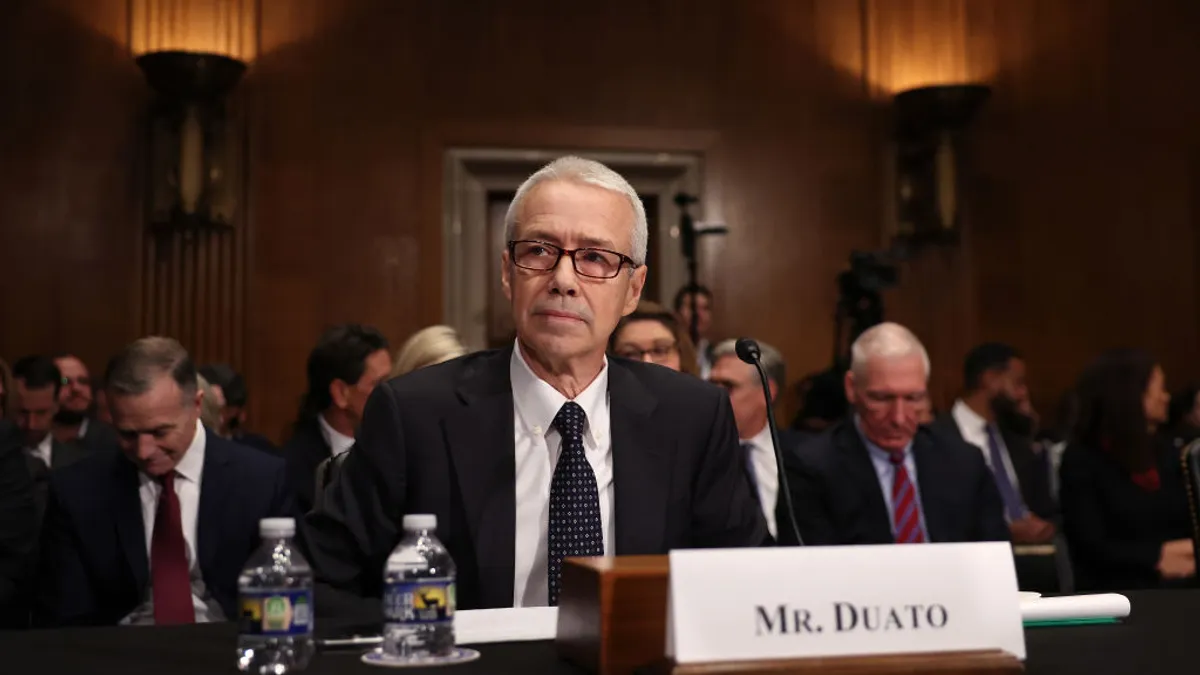Changes across the healthcare industry are putting pressures on pharmaceutical companies to provide value to customers and stakeholders.
 Analysts and executives say the industry will have to watch the intertwining of provider, payer, digital, and pharma value chains closely as we enter an era that is focused on solutions versus product and where value is delivered as a service.
Analysts and executives say the industry will have to watch the intertwining of provider, payer, digital, and pharma value chains closely as we enter an era that is focused on solutions versus product and where value is delivered as a service.
The goal of intertwining pharma, the payer, and the provider is a lofty one, says Daniel Sontupe, managing director, The Bloc Value Builders.
“The environment fostered by the Affordable Care Act set the stage for these organizations to work together as the goal became value vs. volume," Mr. Sontupe says. “If healthcare stays the course, we will see more and more collaborations between payers and providers in an effort to provide more quality care and improve outcomes."
Brian Deppen, VP, pricing and contract management, TGaS Advisors, says there is a continued move toward an outcomes-based healthcare environment/reimbursement model.
“This is being realized partly because of evolving industry contracting strategies that create a ‘win’ for manufacturers, payers, providers, and patients," he says.
Mr. Deppen adds that these outcomes-based contracts, while still a small percentage of total contracts, are increasing in prevalence and, if implemented correctly, can better align incentives for all parties.
Impact on Pharma Companies
Our experts say pharma will need talent who truly understand healthcare and how to provide an integrated solution. They will also need to bring a partnering mindset where they and their partners can both be beneficiaries. This will challenge many in the industry.
“In a world where patient outcomes dictate physician incomes and the manner in which drugs get selected, reimbursed, prescribed, and subsequently adhered to requires greater diligence and personalization all around," says Richard Schwartz, senior VP, marketing and connected health partnerships, Publicis Health. “Manufacturers will have to change how they label and promote drugs, as expensive therapies come with an expectation for outcomes from all parties," he says. “Over- promising or promoting will create backlash and a loss of faith when a drug does not work on a patient for whom it was never intended."
 Mr. Sontupe says if the three entities — pharma companies, payers, and providers — work together, the value proposition will be changed to a value equation, one that takes into account a drug’s benefits, including clinical advantages and health economics, and the programs that support the disease state, such as adherence programs, patient support programs, and other tools will help the payer and the physician engage the patient.
Mr. Sontupe says if the three entities — pharma companies, payers, and providers — work together, the value proposition will be changed to a value equation, one that takes into account a drug’s benefits, including clinical advantages and health economics, and the programs that support the disease state, such as adherence programs, patient support programs, and other tools will help the payer and the physician engage the patient.
“The reality is that value is going to be delivered through contracts and execution," he says. “Pharma companies will have to provide value or outcomes-based contracts to payers, and payers will need to work with providers to ensure patients are managed properly with the drug to ensure they are getting the most value. If all three entities work together in this way, there is the potential to measure a drug’s value proposition in the outcomes it delivers."
Traditionally, pharmaceutical manufacturers have focused much of their value-based contracting efforts on payers, says Rebecca Villari, executive director, market access and reimbursement, TGaS Advisors.
“These contracts are often difficult to execute and manage and thus have had limited uptake," she says. “Where the value chain is most affected is at the point of care. It is of strategic importance for pharmaceutical organizations to enter collaborations/partnerships with providers of care as well as payers to identify and address gaps in the value chain that can improve patient outcomes. Success in demonstrating value is aligned with engaging patients, from preventive and population health initiatives to compliance and adherence along the patient journey, and is best addressed through these provider relationships."
One example is Purdue Pharma’s collaboration with the state of Virginia to form a partnership to enhance utilization of the state prescription-monitoring program as part of the solution to address the opioid crisis. The program, announced in January 2017, will connect the state monitoring program to the electronic health records (EHR) used by Virginia prescribers and pharmacists to make this information an integral part of the patient workflow when prescribing or dispensing controlled substances. The goal is to improve the performance, access, and usability of the PMP program data for 18,000 prescribers and 400 pharmacies in the Commonwealth by the end of 2017.
Purdue Pharma is providing funding to accelerate the uptake of technology that makes monitoring programs interoperable across state lines and increases use within EHR clinical workflows for prescribers and pharmacists.
For GlaxoSmithKline, partnering with providers and payers is critical for achieving a healthy America.
GSK’s Healthy Communities initiative has partnered with leaders in Denver, Philadelphia, and St. Louis to better understand the barriers to and opportunities for collaboration to foster healthier communities. The company has also partnered with the Community Care of North Carolina (CCnC) network of physicians to provide a Patient-Centered Medical Home (PCMH) for its North Carolina-based employees. The model gives primary care physicians access to health information technology, best practices, and care managers to better facilitate care among patients’ various providers to improve healthcare coordination and delivery.
Collaboration Challenges
Mr. Deppen says the current key challenges in this space include how data and systems are shared and integrated across manufacturers, payers, and providers in an effort to measure and implement these contracts.
“Value-based contracting — another term used for outcomes-based contracting — is also very applicable to integrated delivery networks (IDNs), which are organizations that have integrated the payer with the provider: hospitals, clinics, doctor’s office, etc.," he says. “As such, these organizations are in a unique position to initiate and measure value-based contracting efforts across the continuum of care."
Mr. Sontupe says the challenge is the integration of the manufacturer into the equation.
“With very strong anti-kickback laws and the OIG looking closely at any partnership that includes pharma, it is going to be difficult for pharma companies to involve themselves in the delivery of quality of care," he says. “Pharma’s role in the operation of care delivery may only exist in value-based contracting, where pharma companies can commit to providing value, by only earning revenue by delivering on outcomes. The challenge is that the drug distribution flow has so many hands, that pharma companies alone cannot be held accountable for managing costs."
Ms. Villari says key challenges in this space include how data and systems are shared and integrated across manufacturers, payers and providers to implement these initiatives and analyze the results. Without actively engaging the patient in this process, value-based contracts and collaborations will have limited value. (PV)



















